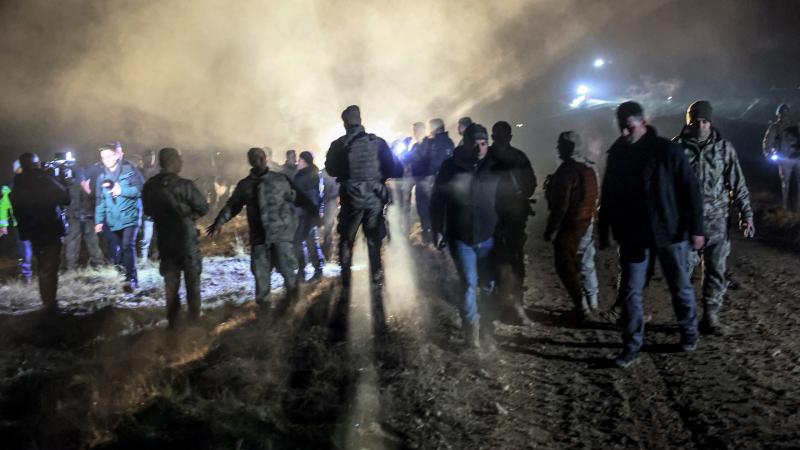US joins allies to stop Houthi Red Sea attacks, but American energy independence likely best weapon
Italy and France are part of the coalition that also includes the U.K., Canada, and nearby Bahrain and the Seychelles.
The U.S. late last week announced the creation of a 10-nation coalition to confront a rising tide of attacks on merchant ships in the Red Sea. European naval forces were on the way even before the details were released.
The same day the U.S-backed plan was announced the Italian naval frigate Virginio Fasan was already preparing to depart to help patrol the Red Sea as attacks on there are on the rise as the impacts of the war in Gaza widen.
The 500-foot-long Italian warship will join a French vessel already patrolling the area and shooting down attack drones from Yemen. Other naval forces are expected to follow suit before the end of the year.
Italy and France are part of the coalition that also includes the U.K., Canada, and nearby Bahrain and the Seychelles.
The unusually quick deployment of the naval ships is proof of how seriously European powers are taking threats in one of the world’s busiest shipping lanes, which threaten to sour budding economic recoveries in both Europe and Asia. But the threats – at least for now – might not be all bad news for the far-distant U.S. economy.
Roughly 90% of global trade is carried out by sea, and the Red Sea is an enormous part of those networks. But while higher energy and commodity prices that could result from an extended slowdown in commerce will have an impact everywhere, including in the U.S., the world’s largest economy may be able to temporarily keep the problems there at an arm’s length.
The U.S. economy is largely energy independent, and its exports and imports mostly move along Atlantic and Pacific trade routes and through the Panama Canal, which is unaffected by recent developments.
Additionally, any slowdown in Red Sea transport that impacts European economies as well as those in China and India could give a competitive advantage to U.S. companies.
The Red Sea remains open, but the largest shipping companies have either rerouted their cargo ships around Africa – in some cases doubling the length of their journeys – or delayed their entry into the area after the pro-Palestine Houthi rebel group from Yemen began targeting commercial vessels passing through the Red Sea.
The group vows to continue until Israel allows the free flow of aid to Gaza and they are calling for an end to the war between Israel and Gaza.
The biggest current challenge involves insurance: most insurers either increase the cost of coverage for cargo in at-risk areas or they outright refuse to insure cargo under those conditions.
Impacts are already being felt. Chinese electric car exports to Europe are among the first products to feel the pinch. Oil prices also rose as tanker ships from the oil-rich region were rerouted.
The hope is that the Virginio Fasan and other naval vessels on their way to the region will help make the Red Sea safe again. But if they fail to do so, the costs will be massive.
Nearly three years ago, the Ever Given, a 224,000-ton cargo ship, ran aground in the Suez Canal, the narrow 120-mile man-made waterway that connects the Red Sea to the Mediterranean Sea. It remained stuck for nearly a week at a cost of at least $9.6 billion per day.
The current drone and pirate attacks in the Red Sea have not caused anything near that level of impact. But with the main European and Asian economies limping toward economic recovery, it’s not a risk major exporters are willing to take.
The Facts Inside Our Reporter's Notebook
Links
- 10-nation coalition
- the impacts of the war in Gaza
- 500-foot-long Italian warship
- shooting down attack drones
- 90% of global trade
- enormous part
- largely energy independent
- Atlantic and Pacific trade routes
- targeting commercial vessels
- increase the cost of coverage
- Chinese electric car exports to Europe
- Oil prices also rose
- ran aground in the Suez Canal
- at least $9.6 billion per day
- European
- Asian
















